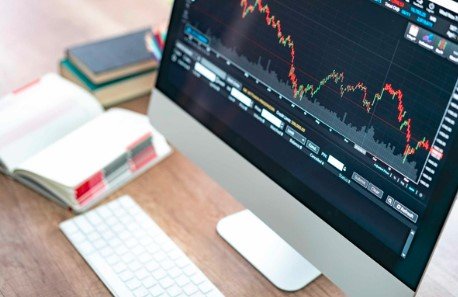Understanding Volatile Forex Markets: Strategies and Insights

Optimizing for High Returns
In FX markets, traders seek the highest return on investment through careful analysis and timing. The entertainment industry sees a similar pursuit, with platforms like best payout casino nz highlighting top-value opportunities for players. Whether you’re calculating currency spreads or payout rates, performance transparency and data-driven choices lead to better outcomes.
The foreign exchange (forex) market, known for its vast liquidity and global reach, is also notorious for its volatility. This volatility can present both risks and opportunities for traders. Understanding the dynamics of volatile forex markets is crucial for developing effective trading strategies and making informed decisions. This article delves into the nature of forex market volatility, its causes, and strategies for navigating this challenging environment.

What Is Forex Market Volatility?
Volatility in the forex market refers to the degree of variation in the exchange rates of currency pairs over a specific period. High volatility means that currency prices can change rapidly and unpredictably, while low volatility indicates more stable price movements. Forex market volatility is influenced by various factors, including economic data, geopolitical events, and market sentiment.
Key Factors Driving Forex Market Volatility
- Economic Indicators
Economic data releases, such as employment figures, inflation rates, and GDP growth, significantly impact forex volatility. Traders closely watch these indicators as they can lead to sharp movements in currency prices. For example, a better-than-expected jobs report can strengthen a currency, while disappointing economic data might weaken it.
- Geopolitical Events
Political events and geopolitical tensions can create uncertainty and volatility in the forex market. Issues such as elections, trade wars, and international conflicts can lead to sudden fluctuations in currency values. For instance, Brexit negotiations have caused considerable volatility in the British pound.
- Market Sentiment
Market sentiment, or the overall attitude of traders towards a currency, can drive volatility. Sentiment is often influenced by news, social media, and market trends. Positive news about a country’s economy can boost its currency, while negative sentiment can have the opposite effect.
- Central Bank Policies
Central banks play a crucial role in forex markets through their monetary policies. Changes in interest rates, quantitative easing programs, and other policy measures can lead to significant currency fluctuations. For example, a central bank raising interest rates typically strengthens its currency as investors seek higher returns.
- Global Events and Crises
Natural disasters, pandemics, and other global crises can disrupt economic stability and cause sudden spikes in volatility. The COVID-19 pandemic, for instance, led to unprecedented volatility in global financial markets, including forex.
Strategies for Navigating Volatile Forex Markets
- Risk Management
Effective risk management is essential for trading in volatile forex markets. Setting stop-loss orders, using proper position sizing, and diversifying trades can help mitigate potential losses. Traders should also avoid over-leveraging, as it can amplify both gains and losses.
- Technical Analysis
Technical analysis involves studying historical price movements and chart patterns to forecast future trends. In volatile markets, technical indicators such as moving averages, Bollinger Bands, and Relative Strength Index (RSI) can provide insights into potential price movements and help traders make informed decisions.
- Fundamental Analysis
Fundamental analysis focuses on economic and financial factors that impact currency values. By staying informed about economic indicators, central bank policies, and geopolitical events, traders can better anticipate market movements and adjust their strategies accordingly.
- Stay Updated
Keeping up with current events and market news is crucial for navigating volatile forex markets. Traders should follow economic calendars, news feeds, and financial reports to stay informed about factors that could influence currency prices.
- Use of Stop-Loss and Take-Profit Orders
Implementing stop-loss and take-profit orders can help manage risk and lock in profits. Stop-loss orders automatically close a trade if the price moves against the trader’s position, while take-profit orders secure gains when the price reaches a predetermined level.
- Adaptability and Flexibility
Volatile markets require traders to be adaptable and flexible. Strategies that work in stable conditions may not be effective during periods of high volatility. Traders should be prepared to adjust their approaches based on changing market conditions.
- Avoid Emotional Trading
Emotional trading can lead to poor decision-making and increased risk. Maintaining discipline and sticking to a well-defined trading plan is essential, especially during periods of high volatility.
Tools and Resources for Volatile Markets
- Trading Platforms
Advanced trading platforms offer real-time data, technical analysis tools, and risk management features. Platforms like MetaTrader 4 (MT4) and MetaTrader 5 (MT5) provide traders with the tools needed to analyze and trade in volatile markets.
- Economic Calendars
Economic calendars provide schedules of upcoming economic data releases and events that could impact forex markets. Staying informed about these events helps traders anticipate potential volatility and adjust their strategies accordingly.
- News Feeds and Analysis
Financial news feeds and expert analysis offer insights into market trends and potential volatility triggers. Subscribing to reputable financial news sources and market analysis services can provide valuable information for making trading decisions.
- Educational Resources
Online courses, webinars, and trading guides offer valuable educational resources for understanding and navigating forex market volatility. Continuous learning helps traders stay updated on best practices and emerging trends.
Conclusion
Navigating volatile forex markets requires a combination of sound strategies, effective risk management, and staying informed about market dynamics. By understanding the factors that drive volatility and employing appropriate trading techniques, traders can better manage risks and seize opportunities in this fast-paced environment. Whether you are a novice trader or an experienced investor, adapting to market volatility and making informed decisions are key to succeeding in the forex market.













30 comments